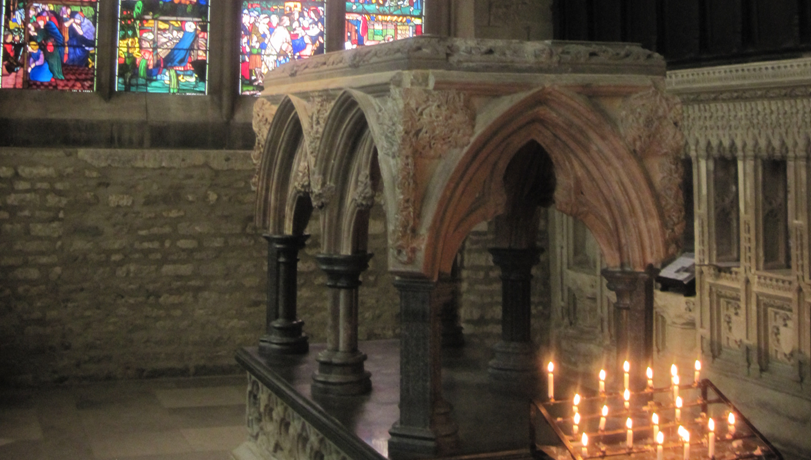 |
| Stained glass from Rochester Cathedral depicting St. William as a Pilgrim. |
William grew up in Perth, Scotland in the 12th century. A pious man, he attended masses daily and as a fisherman and a baker and gave much of what he produced and earned to the poor of Perth. He was additionally involved in helping orphans, adopting the boy, David, as his son, and saving an infant, who had left at the door of a church, from the cold. In 1201 he set out from Scotland with his adopted son, David, to go on a pilgrimage to the Holy Land, taking with him enough for he and his companion to survive and the rest to give to the poor along the way. But while in Rochester, David turned on him and murdered him for what little he had. A madwomen later found his body and adorned it with flowers and herbs, and who upon touching the body was healed of her madness. The monks of Rochester later brought the body to the Cathedral where it would attract pilgrims by the thousands until the Reformation. William was venerated for his charity, piety, pilgrimage, and martyrdom, and is typically depicted as a pilgrim with the scallop shell. His tomb survives Rochester and he has been re-incorporated into the chain of saints associated with Rochester.
What is important to remember about St. William of Rochester is that he was a laymen. Most saints are ecclesiastics: bishops, monks and nuns, and the few saints who were laypeople are often monarchs who established great churches. St. William is a lay-saint, and it is not his death which did not make him one, but his charitable life, abruptly ended on a devotional and humble journey. He may, for many, by a more approachable saint because of this. Though there is little known about him and his cult was never very large in England, he may remain with other saintly laypeople an enduring example of how anyone, not just bishops or religious, can attain such holiness.
 |
| Rochester Cathedral west window. The gothic additions to the originally Norman Church were probably funded by donations from pilgrims who stopped at the shrine of St. William. |



No comments:
Post a Comment